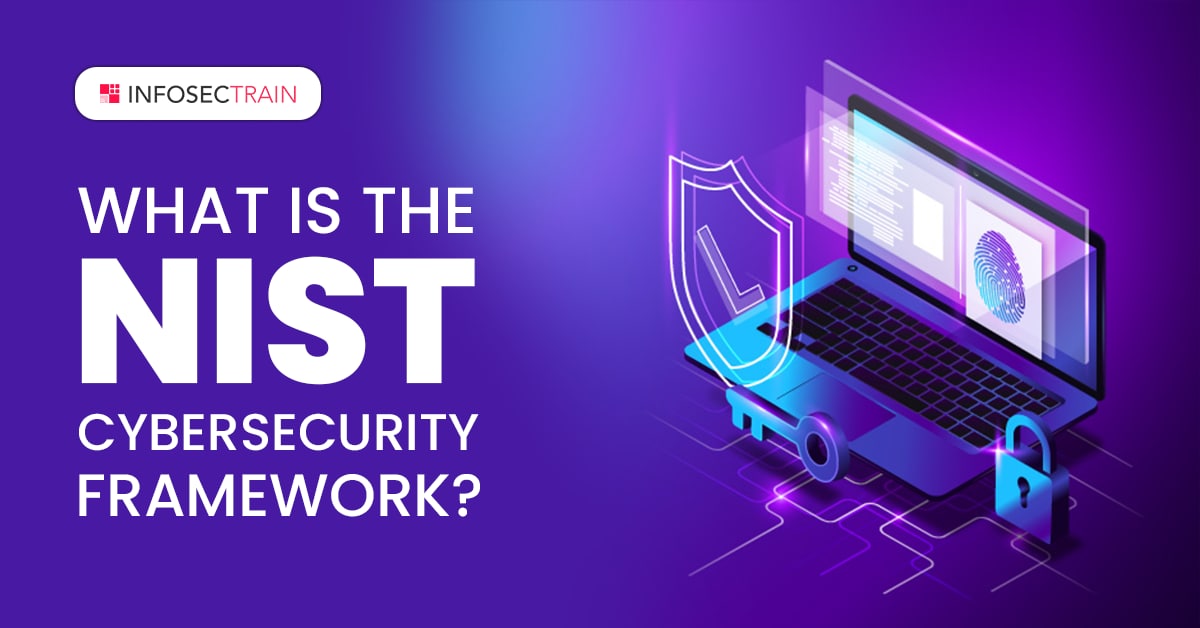What is the NIST Cybersecurity Framework?
It doesn’t matter what industry you work in or how big or small your company is, cyber threats and attacks are becoming increasingly widespread. Hacking and data breaches are regular events for both large and small businesses. The best way to manage these issues is to implement a systematic, well-developed cybersecurity plan to secure vital infrastructure and information systems: a cybersecurity framework.

Table of Contents
The Cybersecurity Framework
Five key functions of the NIST framework
The Cybersecurity Framework
A cybersecurity framework is a compilation of best practices that a company should use to remediate cybersecurity risk. The framework’s goal is to reduce the company’s vulnerability to cyberattacks and to identify areas that are particularly vulnerable to data breaches and other harmful actions by cybercriminals.
The organization’s risk management strategy and risk management activities are inextricably linked to a solid cyber risk management framework. When combined with the use of updated artificial intelligence and information technology, a good cybersecurity risk management strategy can be a great way to ward off cyber threats.
Now, let us discuss one of the most popular and best cybersecurity frameworks, the NIST framework.
NIST
The cybersecurity framework developed by the National Institute of Standards and Technology (NIST) is a useful tool for organizing and improving your cybersecurity programme. It is a set of standards and best practices intended to help businesses establish and improve their cybersecurity posture. The framework outlines a set of recommendations and standards to assist businesses in preparing for cyber-attacks in a better way by identifying and detecting them as well as providing guidance on how to avoid, respond, and recover from them.
This cybersecurity framework was developed by the National Institute of Standards and Technology (NIST) in response to a lack of cybersecurity standards. It provides a uniform set of rules, guidelines, and standards that organizations can use across industries. It is widely considered that the NIST Cybersecurity Framework (NIST CSF) provides the gold standard for building a cybersecurity program. Regardless of your level of experience with cybersecurity or whether your program is already up and running, the framework may be able to provide value by acting as a top-level management tool for assessing cybersecurity risk across the organization.
While using this NIST framework, it will be broken into three components; they are:
Core
The NIST cybersecurity framework is understandable by both technical and non-technical users. The framework’s core can achieve this by using the basic language to explain the sets of cybersecurity activities and their outputs.
The core guides organizations in managing and reducing cybersecurity risks in a way that complements rather than replaces their existing security and risk management processes.
Profiles
The profiles of cybersecurity frameworks will assist organizations in identifying opportunities to improve their cybersecurity and will provide a method for prioritizing those improvements.
These profiles indicate an organization’s unique alignment of organizational needs, appetite for risk, and resources with the framework core’s targeted results.
Tiers
The NIST Cybersecurity Framework’s Implementation Tiers can be utilized to balance an organization’s mission priorities, risk appetite, and resources.
The tiers, which range from 1–4, give the organization insight into how they perceive cybersecurity risk management.
Five key functions of the NIST framework
Identity
To know which cybersecurity risks their systems, assets, data, and frameworks are subject to, they must first analyze their supply chain and work environment. Cybersecurity risk assessment is another term for this process, which determines the level of risk on a day-to-day basis.
Protect
The Protect function describes appropriate precautions to ensure critical infrastructure services are delivered and helps to mitigate or remediate the consequences of a potential cybersecurity disaster. The critical activities of this group are:
- Inside the organization, identity management and access control policies, including physical and remote access, are being implemented.
- Employee security awareness training, including role-based and privileged user training is provided
- Putting policies and practices in place to maintain and manage the security of information systems and resources in accordance with the risk strategy of the organization.
- Maintenance, primarily remote maintenance activities, protects organizational resources.
- The technology is managed in accordance with corporate policies, processes, and agreements in order to improve system safety and durability.
Detect
This function describes the steps to take in order to quickly recognise the emergence of a cybersecurity incident, which is critical in detecting potential cybersecurity events. This function’s responsibilities include the following:
- Ascertaining the detection of anomalies and events, as well as the potential impact of these events
- Adding capabilities to monitor cybersecurity events and check the efficiency of preventive measures, such as network and physical actions, continually.
Respond
Companies must have an incident response team set up before they are needed. Ensure that all stakeholders are involved in this phase of the preparation and that there is a clear line of command from the time the cyber assault is discovered to the time it is mitigated.
Recover
Mitigation is an important aspect of the recovery process. It offers strategies for restoring critical functions and services and a list of temporary security measures to put in place as quickly as possible after your systems have been affected by a cybersecurity incident.
InfosecTrain
InfosecTrain is a leading international provider of IT security training and consulting services. InfosecTrain offers the most rigorous professional IT, cyber security, and cloud certification training for anyone who wants to advance their career. So, check out InfosecTrain to build your cybersecurity career.






 1800-843-7890 (India)
1800-843-7890 (India)